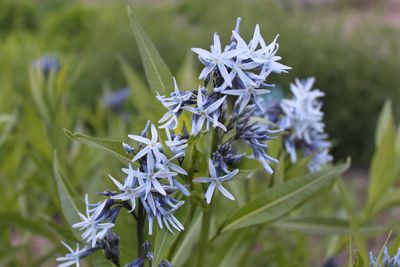Can You Grow Bluestar Plants in Winter?
Native bluestar amsonia plants grace plenty of gardens as low-maintenance, easy to grow perennials. If you plant them in full sun or partial shade in moist soil, the shrubs provide dense clusters of spring flowers and golden fall foliage. But can you grow bluestar plants in winter? That depends on a comparison of amsonia cold tolerance to the coldest temperatures in your region in winter. Amsonia cold tolerance is one of the factors that recommends it to northern gardens. This amazing plant thrives in U.S. Department of Agriculture plant hardiness zones 4 through 9, surviving temperatures below freezing. Some species, like Amsonia taberrnaemontana is hardy to zone 3. Although the plant has a delicate look to its slender foliage, it is actually quite tough. In regions with pronounced seasons, the plant is at its best in fall. The leaves turn a stand-out yellow. They remain standing when the first frosts hit and even winter snow. Yet for those growing amsonia in winter, weather can bring fears of unpleasant surprises. You may wonder if you should be using amsonia winter protection to assist the plant during the coldest periods.
Amsonia Winter Protection
Given the plant’s excellent cold tolerance and tough nature, it is not considered necessary to protect it in the garden. Still, there are some things you can do to promote amsonia winter care. If you are growing this plant in winter, you might want to prune in late fall. This type of winter care is more to promote dense growth in spring than to prevent cold damage. If you decide to undertake this task, trim the plants to about 8 inches (20.5 cm.) from the ground. Look out for the white sap released by the stems that irritates some people. A pair of good gloves should do the trick.
